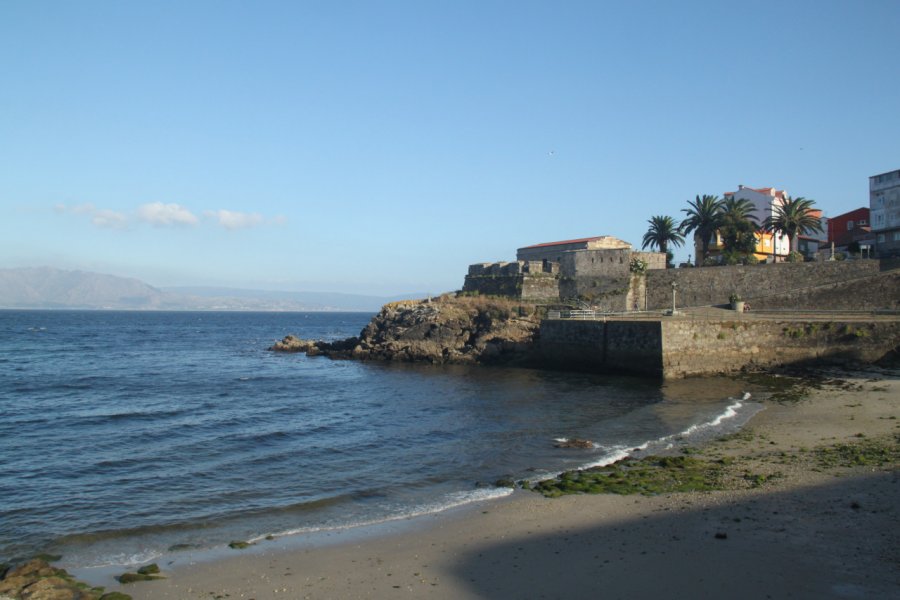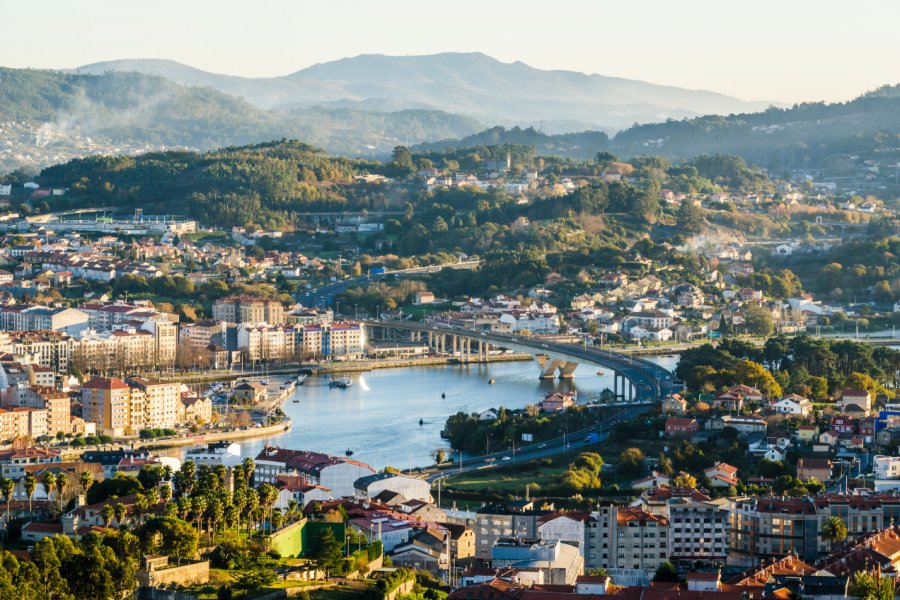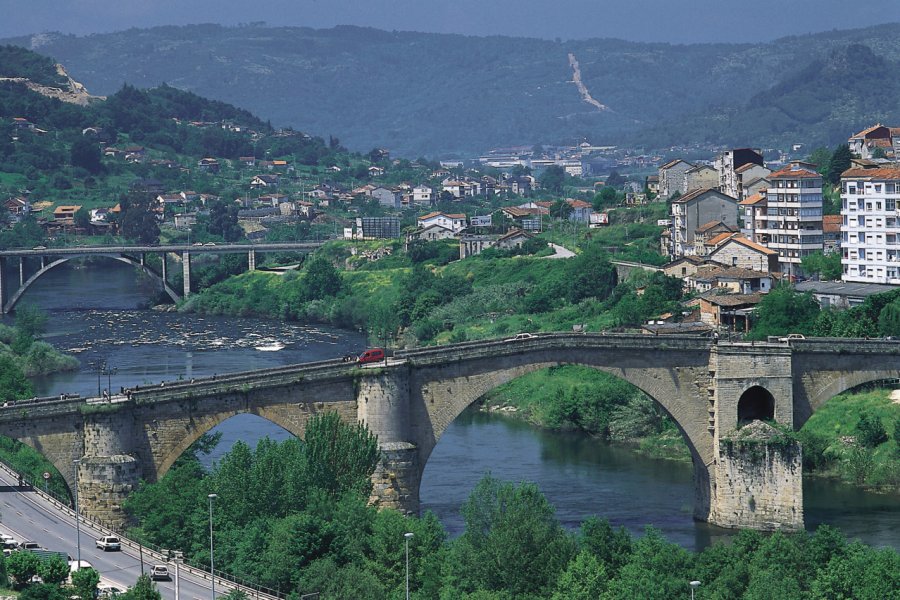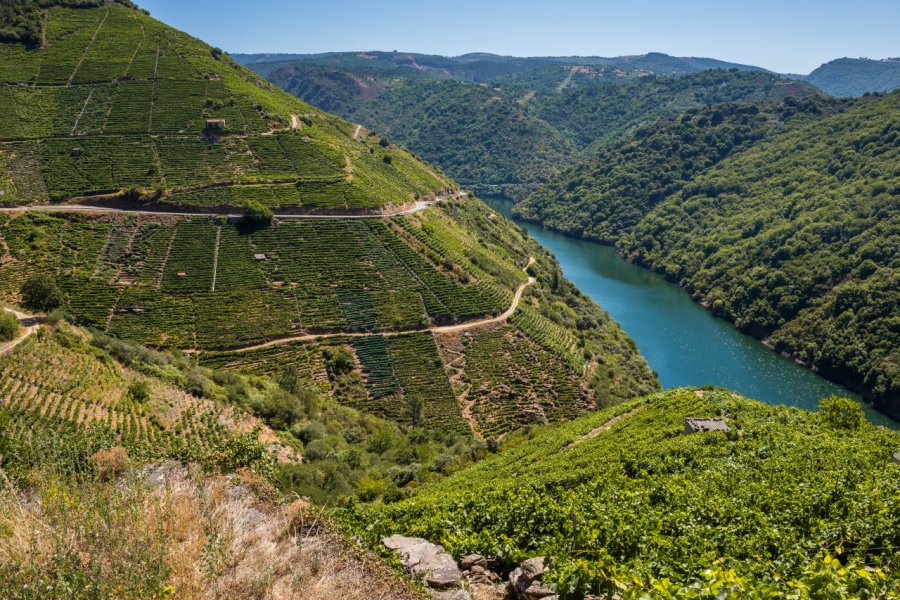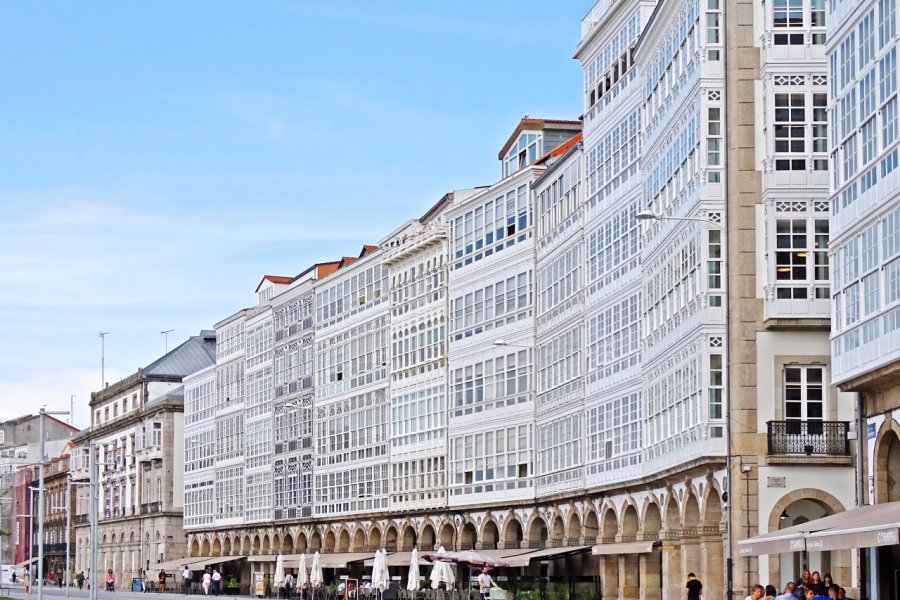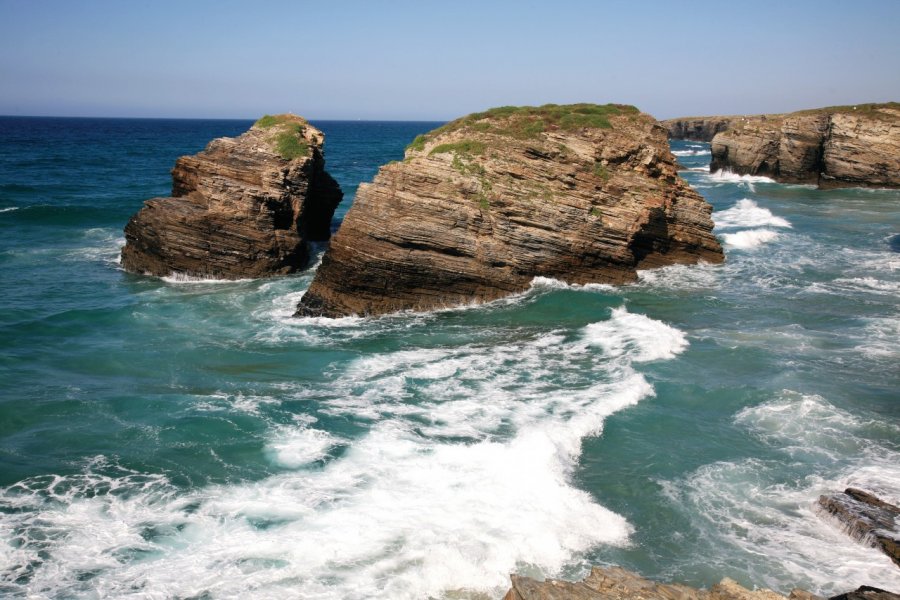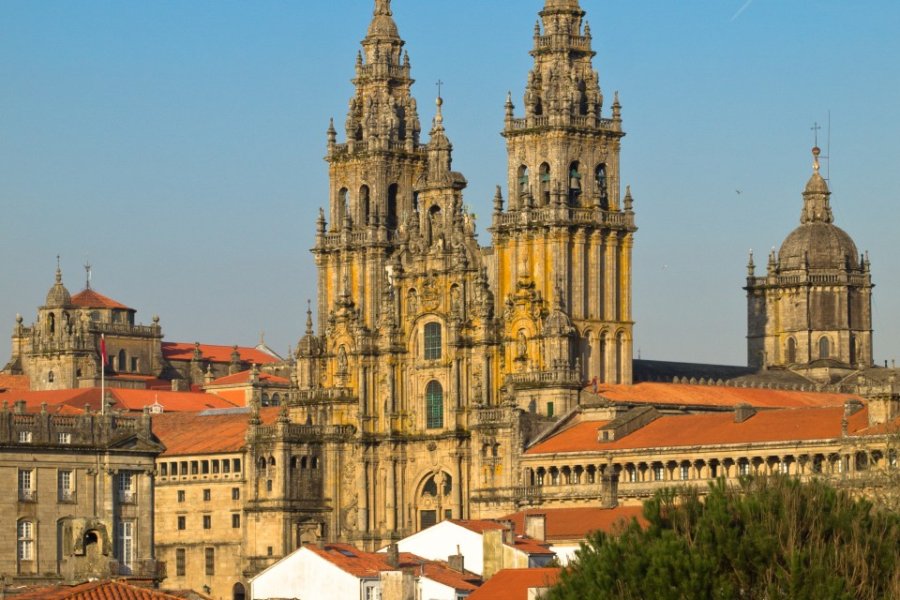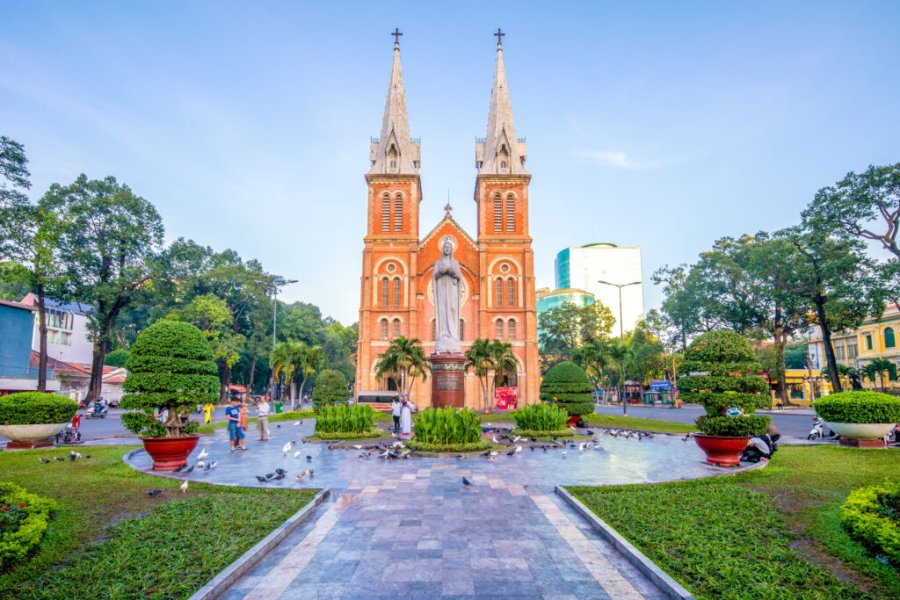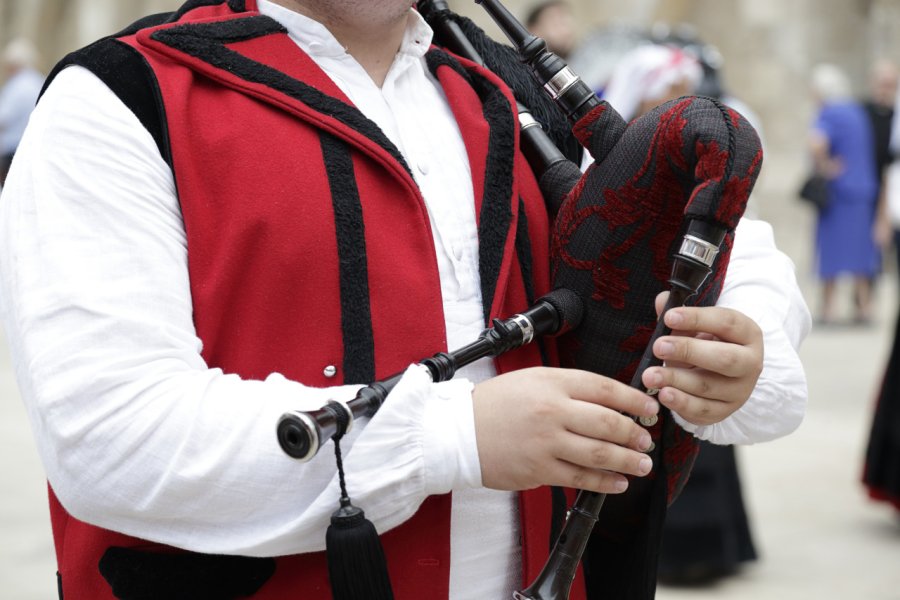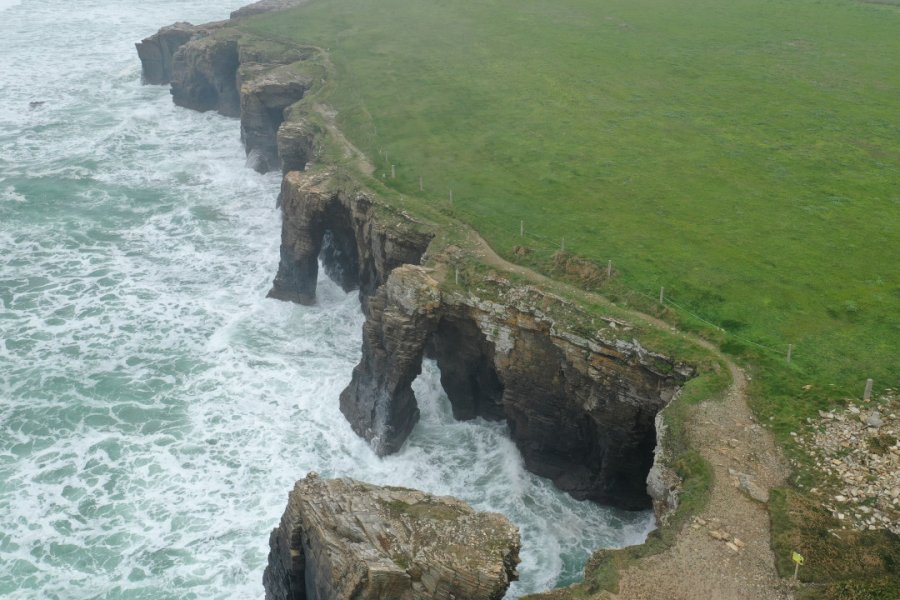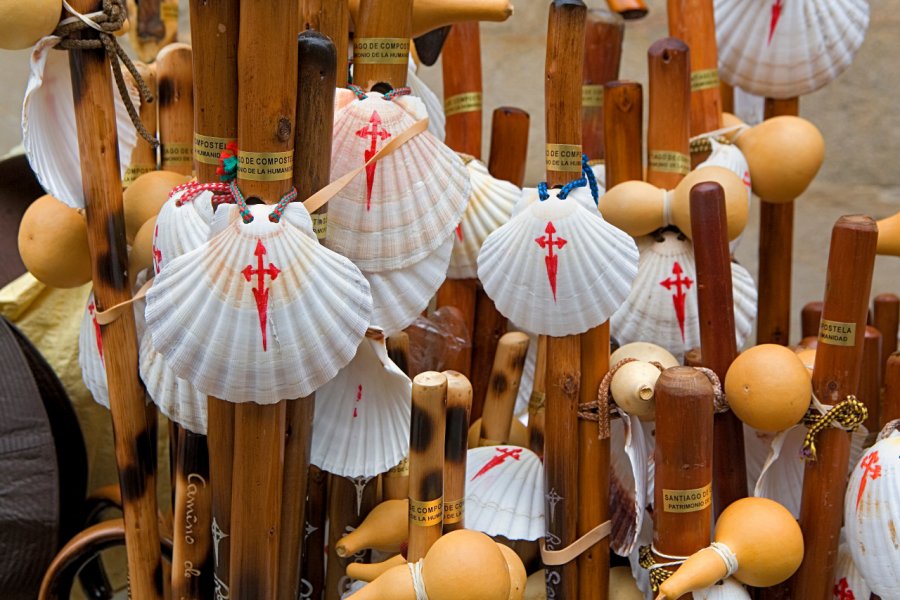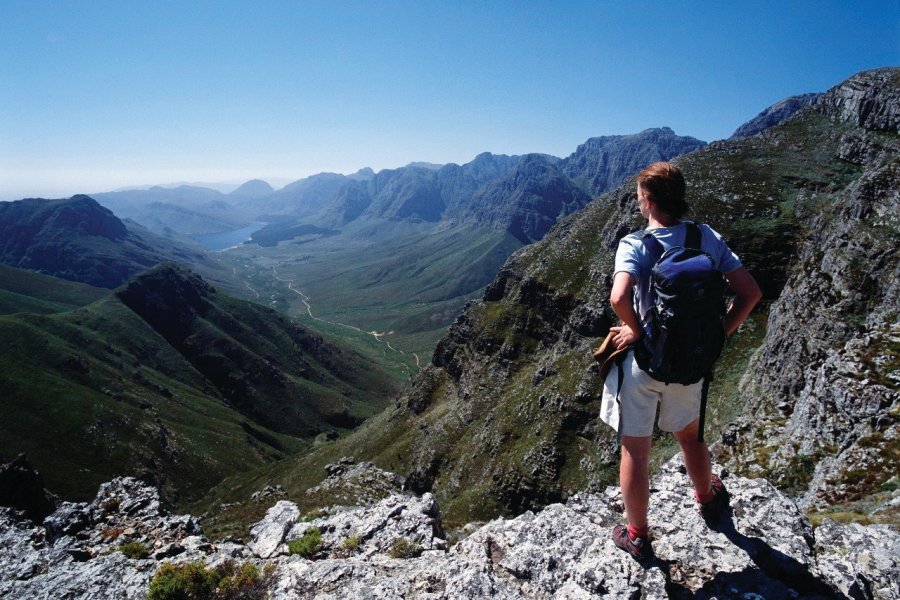Travel Guide Galicia
Welcome to a mystical land where nature, culture and tradition come together in graceful harmony. Welcome to Galicia, a sublime region in north-western Spain. With its coasts battered by the Atlantic Ocean, its thick forests and bewitching mountains, wild, rural and raw, it is the symbol of an unknown Spain. Rich in tradition, it is imbued with a strong cultural identity stemming from its ancient and maritime history. In addition to Castilian, it boasts its own linguistic heritage, Galician, a co-official language deeply rooted in the daily lives of its inhabitants. This linguistic diversity reflects the region'sCeltic heritage , which is also evident in its music, dances and festivities.
Santiago de Compostela, or Santiago de Compostela, the region's capital, is the culmination of the famous Camino de Santiago pilgrimage. Its imposing cathedral, which is also a World Heritage Site, attracts visitors from all over the world, who come to pay their respects or simply admire its grandiose architecture. Visit its ancestral palace too!
Cities such as La Coruña and Vigo are also well worth a visit. Vigo, for example, is the ideal starting point for exploring the Cíes Islands, a veritable paradise for beach lovers. Galician gastronomy is another highlight of the region. Fresh seafood, pulpo a la gallega (Galician-style octopus) and empanadas are just some of the delicacies to be savoured in the coastal region's finest restaurants.
The north coast, with its jagged coastline and hidden beaches, is mesmerizing. La Coruña, a bustling fishing port, also promises a memorable stopover. Explore the wild Côte de la Mort and the picturesque lighthouse route, the O camino dos faros. The central region and the Alto Mino reveal a rural Galicia, far removed from mass tourism. Finally, why not take the ferry to Portugal from Guarda for a 10-minute cross-border trip to O Pasaxe?
If you're a wine lover, don't forget to visit the Ribeira Sacra, a wine-growing area which, with its steep terraces overlooking the River Sil, offers incredible views.
Galicia's natural heritage is equally impressive. The Rías Baixas, inlets surrounded by sandy beaches and lush green forests, are perfect for water sports and relaxation. Further inland, the Sierra de la Enciña de Lastra Natural Park is an invitation to hike, with its varied landscapes of mountains, rivers and forests.
This Galicia Tourist Guide invites you to discover the finest accommodation and places of interest in this captivating Spanish region. And why not discover Galicia in a week? ¡ Anda!
What to visit Galicia?
Suggested addresses Galicia
When to go to Galicia?
When to visit Galicia
Galicia, the lush green region of north-western Spain, is often compared to green Ireland because of its oceanic climate. The seasons define the rhythm of the region and influence your travel experience.
From May to September, Galicia is at its tourist peak, as the mild, pleasant climate means longer days for exploring. If you're planning to walk the famous Pilgrim's Way to Santiago de Compostela, the best time to visit Galicia is undoubtedly June or September, to avoid the summer crowds.
Summer, in July and August, is when the region comes alive, with festivals, local markets and a lively atmosphere in the streets. However, it's also the time when prices rise!
If you prefer a quieter atmosphere, consider April or October. Nature reawakens in spring and is decked out in shimmering colors in autumn. However, remember that rain is more frequent during these months.
Winter, particularly from November to February, is quiet and less touristy. It's the ideal time to visit monuments and museums, although the weather is colder and wetter.
Why not go in February? Well-covered, you'll be taking part in Galicia's traditional carnival, where the streets are alive with music, dance and colorful costumes.
Weather at the moment
Galicia enjoys an oceanic climate, characterized by mild winters and cool summers:
During the high season, from June to August, temperatures in Santiago de Compostela hover around 25°C, making it a pleasant place to explore. However, this is also the period when rain is frequent, especially in coastal regions such as La Coruña.
In the low season, particularly from November to February, temperatures in Galicia drop to 5°C, especially in inland areas. Rainfall is more abundant, making for a verdant landscape.
If you plan to visit Cape Finisterre or the Rías Baixas, be prepared for microclimates, with milder temperatures in winter and cooler ones in summer. In short, although Galicia is humid all year round, its mild climate makes the region attractive in all seasons.
Travelling in Galicia is generally inexpensive, compared with other regions of Spain. The currency used is the Euro, which is generally stable, although some fluctuations may occur depending on the European economic context. ATMs are readily available, and most establishments accept credit cards.
Galicia is full of family-run guesthouses and small restaurants offering local cuisine at reasonable prices. For added comfort, mid-range hotels offer quality services. Finally, you'll find boutique hotels and upscale establishments in emblematic locations, notably near Santiago de Compostela.
Tipping is not obligatory in Spain, but it is common practice to leave a few coins after a meal or tapas. The Castilians are generous, and they advocate hospitality. It's a real pleasure to share a moment with them.
Before travelling to Galicia, here are the necessary administrative formalities. European Union citizens do not need a visa for Galicia. A valid identity card or passport is all you need to enter and stay in Spain for less than 3 months.
For non-EU citizens, depending on your country of origin, a visa may be required. We recommend consulting the website of the nearest Spanish embassy or consulate for up-to-date information on visa requirements for Galicia.
You should also take out valid travel insurance, because although Galicia has excellent health services, it's always best to be covered in the event of an emergency. Careful preparation will ensure that your trip to Galicia is memorable and trouble-free.
Galicia, a beautiful region of Spain, is a developed European country with a modern healthcare system. No specific vaccinations are required to enter the country. However, make sure your usual vaccinations, such as tetanus and diphtheria, are up to date.
One of the advantages of traveling in Spain is that drinking water is safe throughout the country. However, depending on the region, the taste or mineral content of the water may vary. In coastal areas, water can have a saltier taste due to its proximity to the sea. If you have a sensitive stomach or prefer to avoid any risk, bottled water is always a good idea. What's more, in certain more rural or mountainous regions, it's advisable to check with the locals or your accommodation before drinking tap water.
Practical information
- When to travel?
- Weather forecast
- Budget
- Formalities
- Health
- How to travel by yourself?
- How to get organized?
- Getting around
Media
How to go to Galicia? Our advice & tips
Opting for a Galicia tour package means opting for serenity and optimized discovery of a region of raw beauty and strong identity. These turnkey holidays generally offer a balanced itinerary of nature and culture, from the breathtaking cliffs of the Côte de la Mort to the historic streets of Santiago de Compostela. With a local guide, immerse yourself in Galician authenticity, sample typical dishes and listen to Celtic traditions that are still very much alive. What's more, organized tours often offer privileged access to lesser-known but equally fascinating sites and experiences. A free-spirited adventure on Galician soil awaits you!
Discover our selection of travel agencies for this destinationTravelling alone in Galicia is an invitation to discover a region rich in tradition and breathtaking scenery. As a solo traveler, take the time to explore the rugged rias along the coast, lose yourself in the deep, spiritual forests of the interior, or follow in the footsteps of the pilgrims on the route to Santiago de Compostela. The Galicians, renowned for their hospitality, will guide you and help you discover their traditions, gastronomy and language. Take with you a good tourist guide, a pair of walking shoes and a mind open to enrichment!
Galicia, with its varied landscapes, requires a certain flexibility in travel to fully appreciate its beauty. If you land at Santiago de Compostela airport, start by taking the city bus that links the airport to the city center. For intercity travel, the Monbus bus company offers frequent services between Galicia's main cities. Renfe's train stations, located in the major cities, offer connections to other parts of Spain. However, to explore the coasts, isolated lighthouses or small fishing villages, a rental car is essential. For a unique experience, from May to September, take the sea shuttles from Vigo to discover the Cíes Islands. Finally, don't forget cabs, which are available even in rural areas, although they are a more expensive option.

